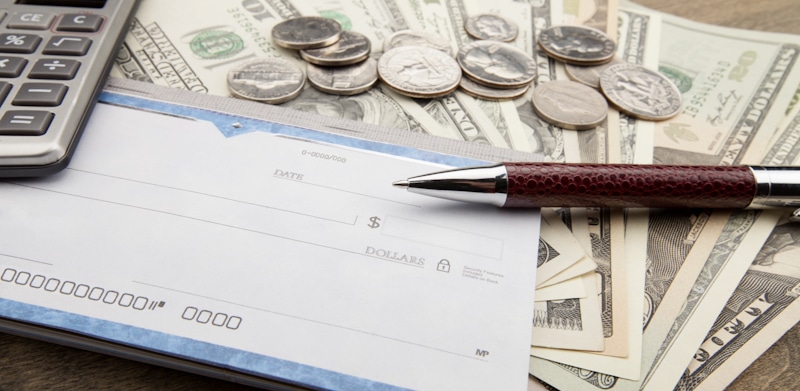

It’s common to wonder how much you should save for your future. Should you just save as much as you can? Or is there a specific amount to save?
Most people recommend the 50/30/20 budget, which suggests allocating 20% of your income to savings. But that 20% also includes repaying debts. You may need to adapt this rule to fit your needs, as everyone’s finances differ.
Take a closer look at the savings recommendations based on the 50/30/20 rule, as well as other guidelines for saving money.
While there are popular recommendations on how much you should save every month or every paycheck, it will look different for everyone. The amount you save will depend on your disposable income, your debt, and your overall savings goals.

The most common advice for savings is to allocate 20% of your income to savings. Variations of this recommendation say to dedicate that 20% to both savings and paying off debt, especially high-interest debt. This suggestion is based on the 50/30/20 budgeting rule, which states the following:
Keep in mind that each percentage is based on your take-home pay, so do your computations based on your income after taxes and other deductions.
You can apply these percentages to either your monthly income or each paycheck. Either way, it will total to the same amount overall.
You may wonder why the 50/30/20 rule uses 20% for savings. This comes from the idea that you can earn about 8% return on your investments each year.
Bear in mind that not everyone is in the same financial situation. There will be people who will be unable to dedicate 20% of their take-home pay to savings. If you can follow the 50/30/20 rule, remember that savings and debt repayment are in the same category. So, someone who is debt-free could be saving the full 20% of their paycheck, while someone with a fair amount of debt may only be saving 10% or less.
If you can’t save 20% of your income, figure out what you can afford to save. If you are living paycheck-to-paycheck, focus on getting financially stable before worrying too much about savings. But do what you can to cut corners and deposit the difference in a savings account.
On the other end of the spectrum, suppose you have an extremely high-paying job. If you live frugally, you could easily save more than 20%.
The key to saving is to start with a goal, no matter how small. Even if you can only save $10 a week, start with that. This seemingly small amount will be $520 a year and even more with interest.
Instead of saving the full 20% of your take-home pay, start with 5% or 10%. Then, increase it gradually as you are able to comfortably do so. Remember that any savings can make a difference.
If you can’t jump right into saving 20%, financial experts at Ramsey Solutions suggest taking baby steps to get there. The first baby step is to get $1,000 in savings as quickly as you possibly can. This will serve as your emergency fund.
Once you have some savings stored up, you can proceed to pay off debt. If you have more than $1,000 in savings, use the excess to pay off your debt. Set aside any future income that you would have spent on savings to pay off debt instead. You can do all this while keeping your emergency fund at $1,000. At this point, you can still save up for short-term goals, like car repairs, insurance premiums, and holiday gifts.
Once you get out of debt, you can take bigger steps. This is when you focus on making sure you have enough savings to cover three to six months’ worth of your expenses. If anything happens to your current source of income, at least you are covered for the next several months. Finally, you can begin saving at least 15% of your take-home pay.
You’ll notice that this method suggests saving 15% of your take-home pay instead of 20%. This just shows that the best method of saving can vary with each individual, and the 50/30/20 rule is not set in stone.
We mentioned the example of someone with a high-paying job who lives frugally and decides to save a lot. So you might wonder if it would ever be disadvantageous to save too much money.
It depends entirely on your situation. You need to balance planning for your future and enjoying life in the meantime. Remember that your money can’t go with you past death.
So, if you are saving a lot but sacrificing time with family or causing yourself undue stress, it’s safe to say that perhaps you are saving too much. That’s why the amount you should save depends on your situation.

One important guideline in savings is not to save too much money in your retirement accounts. That’s because withdrawing from these accounts early leads to penalties and taxes.
In practicality, you should determine how much of your savings you need ready access to. How much is for your emergency fund or short-term goals? Keep those funds in a savings or investment account.
Striking a balance is key. After all, putting as much as you can in retirement accounts like an IRA or 401(k) gives you extra benefits, such as higher returns and tax savings. On top of that, many employers offer 401(k) matching. This reduces the percentage of your paycheck that you have to save, as they will save some of it for you. For example, if your employer matches 5%, you could save just 15% of your income and still get the 20% savings.
How much of your income is smart to save depends on your stage in life and the types of savings you are talking about. There are emergency savings, short-term savings, and long-term savings, plus a few other ways to categorize them.
While the exact amount you should have saved depends on your goals and situation, some general guidelines are helpful across certain demographics. For example, by the time you are 40, you want to have about three times your salary in savings. And by the time you are 50, you want about six times your salary saved.
In addition to saving for long-term goals like buying a house, your kids’ college education, or retirement, you should also have an emergency fund. Ideally, this fund should amount to three to six months of your total expenses. So instead of using a specific percentage of your income as a basis for savings, compute your target emergency fund based on your estimated expenses.
The 4% rule for retirement also uses your expenses instead of income as a basis for the amount you need to save. This applies to living off of your savings upon retirement, not the actual act of saving. The 4% rule says that if you withdraw just 4% of your balance annually, you can live on the savings indefinitely. In other words, you would need to save 25 times as much as your annual expenses to be financially independent and not have to work.
Just keep in mind that this rule is not set in stone. To start, any investment that earns at least 4% will have some degree of risk. On top of that, inflation is not accounted for in this computation.
If your goal is to save 25 times your annual expenses, how long will it take for you to do so? Assuming that your investments average 8% returns annually, the following is true:
If you don’t want to do tough calculations or talk to a financial advisor just yet, then just aim to save about 20% of your paycheck or monthly income after taxes. But you ideally want an even better picture of your finances and savings goals. To do so, you can use an online retirement calculator, which is freely available online. You can also talk to a financial consultant. As you get closer to retirement age, it becomes more important to consult an expert with regard to your finances.

As mentioned, any amount of savings is better than nothing. Still, it is wise to increase the amount you save each month gradually until you reach about 20% (or whatever figure you decide on). If this is challenging, consider the following recommendations:
The general rule is to save about 20% of your take-home pay every paycheck or month. However, if you can’t save this much money, start with a smaller goal and work your way up. Even saving a small percentage of your income will add up over time and get you started with good saving habits.

